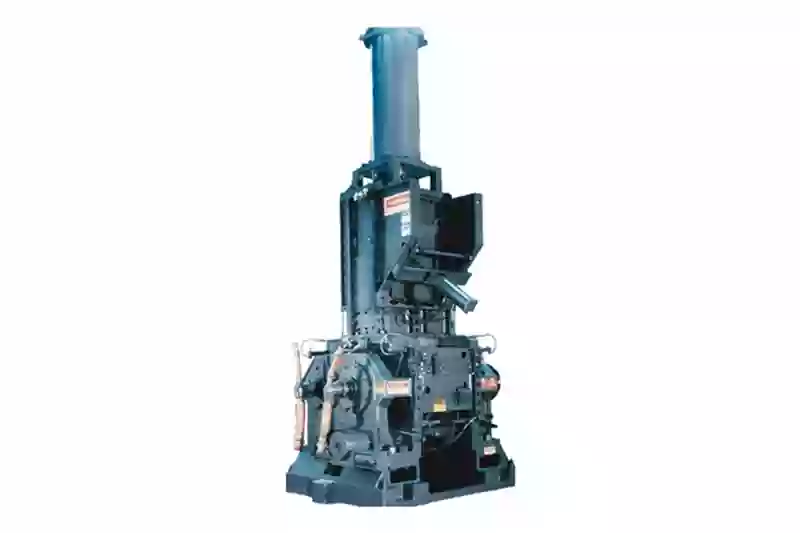
Courtesy : Farrel Pomini - Banburry Mixer
Synthetic Rubber Elastic Wonders
Team Chemical Market
12 Mar 2024
Introduction
In the clandestine world of industrial innovation, where chemical concoctions and scientific breakthroughs, hold the keys to economic supremacy, few advancements have wielded as much influence as the advent of synthetic rubber.
With the tumultuous onset of World War II, the world found itself teetering on the precipice of a cataclysmic conflict. Amidst the chaos and devastation, the world was driven towards innovation. A dire shortage of natural rubber, a vital resource for military machinery ensued. Synthetic Rubber first formulated in Russia, and then refined in Germany in the early 1900s, became a crucial solution. Through relentless experimentation and ingenuity, Rubber Manufacturing factories arose, albeit becoming targets of bomb attacks. Significant progress has been made after the war in this domain, especially in serving emerging technologies.
Types of Synthetic Rubber
Synthetic Rubber is an artificial elastomer. Removal of the stretching force, makes them return to their original shape and size. These are polymers made from petrochemical feedstock, with crude oil being the principal raw material. Notable among them are SBR ( Styrene Butadiene Rubber), Polychloroprene ( Neoprene), Nitrile Rubber (NBR), Silicone Rubber (SiR), etc. Each one of them has distinct characteristics making them suitable for diverse applications. Various chemicals are employed in making the different varieties
Manufacture
Synthetic rubber mimics the properties of natural rubber. It is a polymer made through chemical synthesis. Manipulating the chemical composition and the manufacturing process yields products with varying properties. The manufacturing process begins with the selection of appropriate monomers, such as Styrene, Butadiene, Isoprene, Chloroprene, and Ethylene. The selected monomers then undergo polymerization, where they start to bond together forming long chains. At some point, these are terminated using terminating agents, when the required chain length has been achieved. The synthetic rubber thus obtained may undergo further processing to achieve specific properties. This could include blending with other polymers or additives, vulcanization, etc. A pivotal stage in this manufacture employs a Banburry mixer, whose photograph is shown above. Used after the polymerization process, fillers, curing agents, accelerators, antioxidants, plasticizers, reinforcing agents, etc are added to the unprocessed rubber. The mixer works to uniformly distribute these additives throughout the rubber matrix, while also facilitating the blending process to ensure a homogeneous mixture. Its distinctive design features two counter-rotating blades in a chamber with an additional set of intermeshing blades. The intense mechanical action kneads and shears the rubber mixture. High torque is required during the entire process. Banburry mixers also facilitate precise control of temperature and shear rates which are critical process parameters. Quality checks are conducted on the end product for factors such as tensile strength, chemical resistance, viscosity,molecular weight, etc. Thereafter it is packed and distributed. Synthetic Rubber manufacturing is a complex chemical process, involving careful selection of monomers, precise control of reaction conditions, and testing at each stage to ensure product quality.
Applications
The important types of Synthetic Rubber have been described in the above paragraph. We here list the unique properties and Applications of Synthetic Rubber
SBR ( Styrene - Butadiene Rubber ) - Exhibits excellent tensile strength and good abrasion resistance. It is also oxygen, ozone, and sunlight resistant. Finds use in automobile and bicycle tires, footwear, conveyor belts, hoses, etc.
Polychloroprene (Neoprene) rubber - Known for its resistance to flame, heat, and oil, it can be used over a wide range of temperatures. It is also resistant to degradation from ozone and oxygen. Applications include wet suits, diving gear, electrical insulation, automotive fan belts, etc
Nitrile Rubber (NBR) - With good resistance to abrasion and tearing, it offers moderate resistance to heat and weathering. However, it offers excellent resistance to oil, fuel, and grease. These properties make them ideal for use in seals for hydraulic and pneumatic systems, gaskets and O rings, conveyor belts, hoses, and oil handling systems.
Silicone Rubber ( SiR)- boasts good resistance to extreme temperatures, UV( ultraviolet) light, and ozone along with excellent electrical insulation and physiological inertness. Finds usage in medical devices and implants, ultra flexible high voltage cables, Kitchenware, and Industrial sealants.
Natural rubber is still used in the tread, side walls, and beads of automotive tires. Due to its superior grip and resilience properties, it provides better riding comfort. Much of the natural rubber produced is used in tire manufacturing. Synthetic rubber and other additives are also blended with natural rubber to enhance certain specific properties such as durability, rolling resistance, and wet traction. V- belts too use natural rubber. The major physical parameters for both applications include tensile strength, shear strength, hardness, density, elongation at break, and modulus of elasticity.
Environmental Impact of Synthetic Rubber
Synthetic rubber like its natural counterpart can also be recycled. However economic viability, efficiency, and types are to be taken into consideration. The production of Synthetic rubber relies on petroleum or natural gas, with significant environmental implications. Further, energy usage during manufacture is rather high, and this has to be sourced indirectly from fossil fuels. Water consumption for the process could strain the local resources. Certain manufacturing processes release nitrogen oxides and sulfur oxides, contributing to air pollution and adverse human health effects.
Conclusion
The transition from natural to synthetic rubber prompts consideration regarding the displacement of those employed in the natural rubber trade. It should be noted that tapping natural rubber is labour-intensive. The saga of synthetic rubber is far from over. Innovation in the field of polymer chemistry continues unabated, with new requirements emerging continuously. The journey to discovery is a never-ending quest - a quest fired by human curiosity and the relentless pursuit of knowledge.
Other Important News Articles More